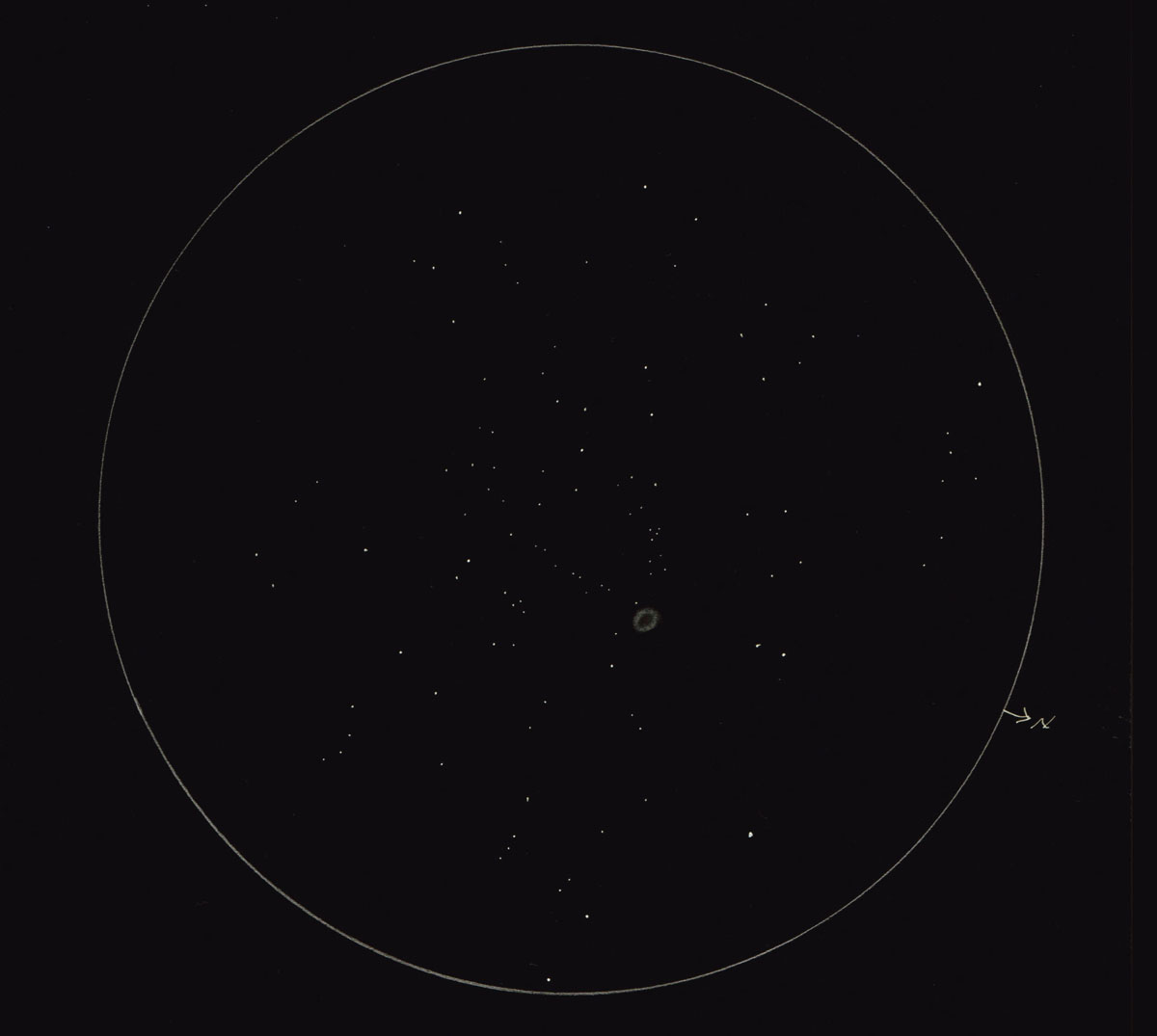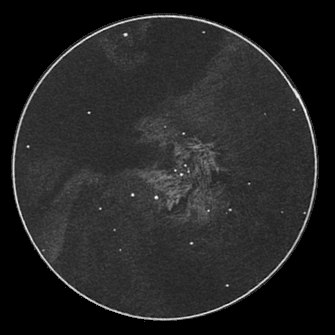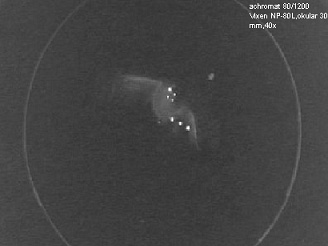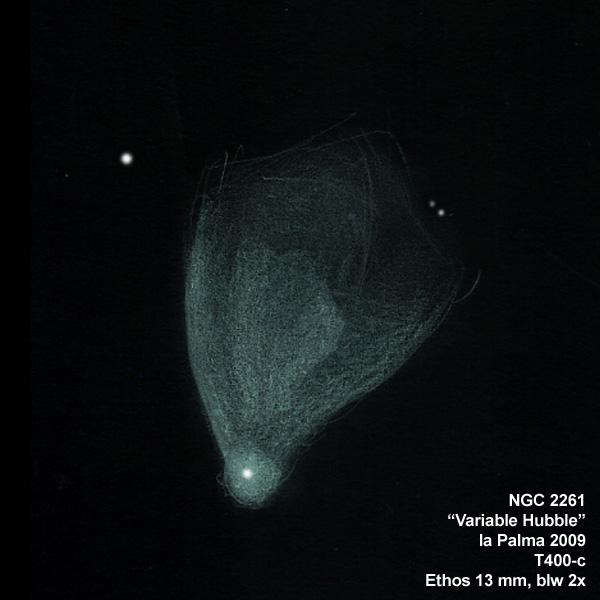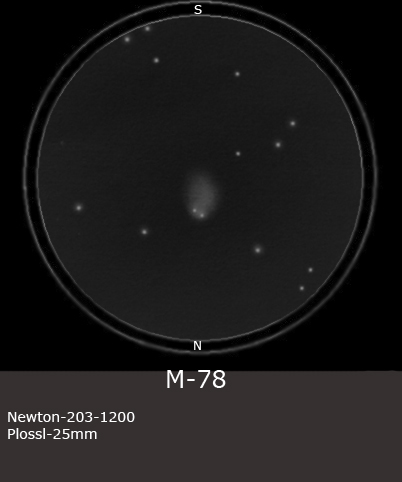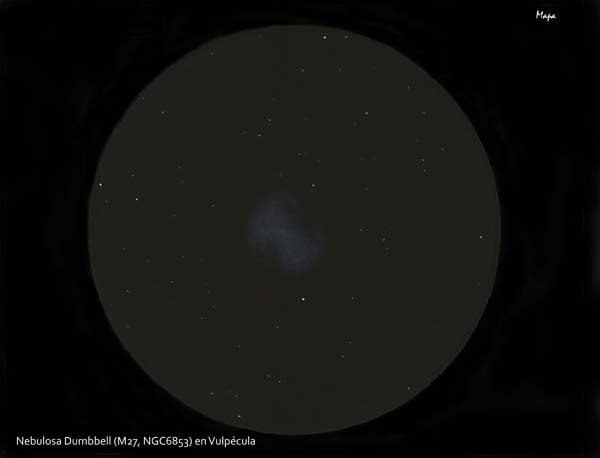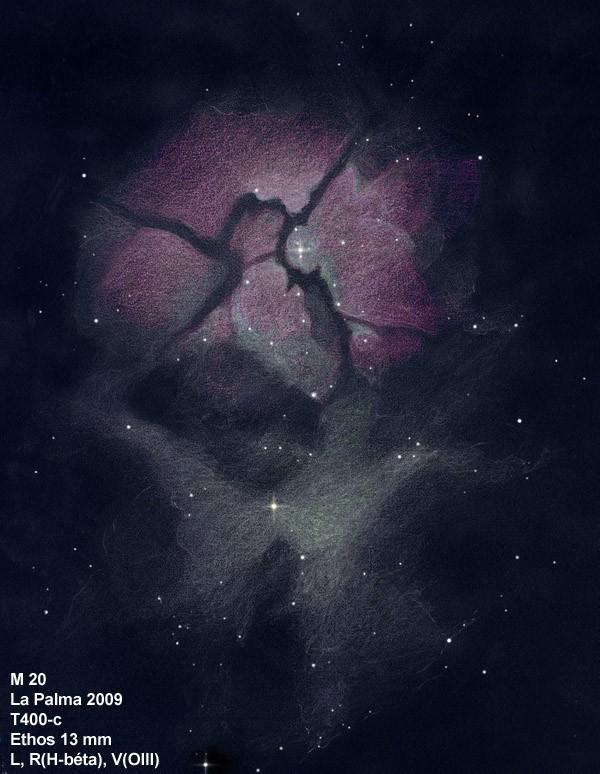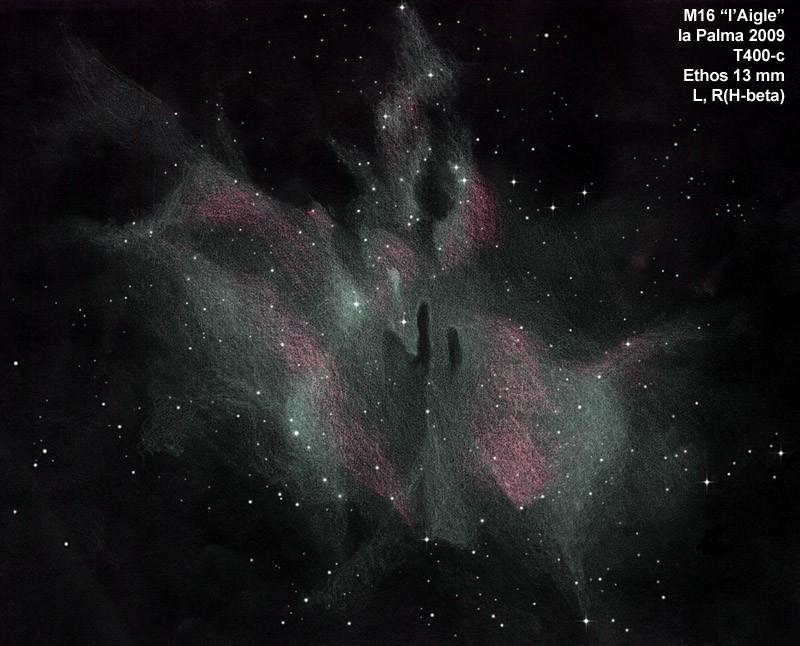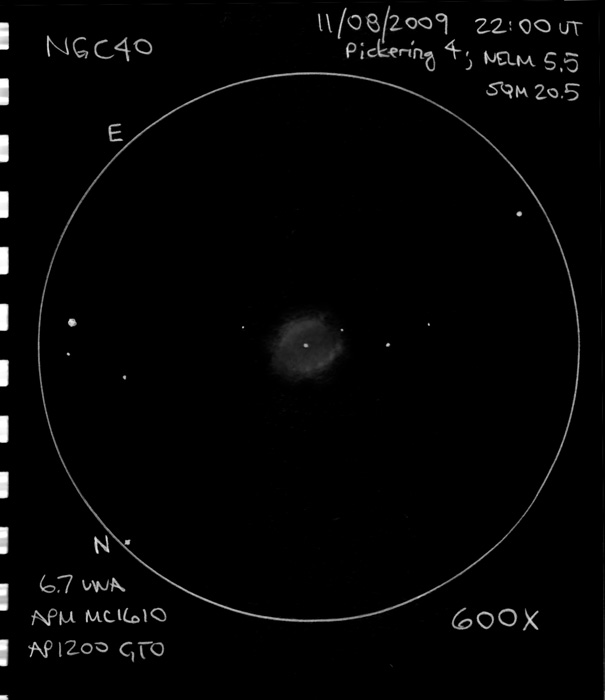
NGC 40, a planetary nebula in Cepheus
Sketch and Details by Jeff Young
NGC40, a planetary nebula in Cepheus, progressively shows more and more structure as the magnification goes up. At 150X, I see a bright star surrounded by a bright, circular halo.
235X reveals a brightness gradient, with the south end appearing somewhat dimmer. 335X is better yet, revealing a slight pinching along the north-south axis, with brighter sections at the east and west periphery.
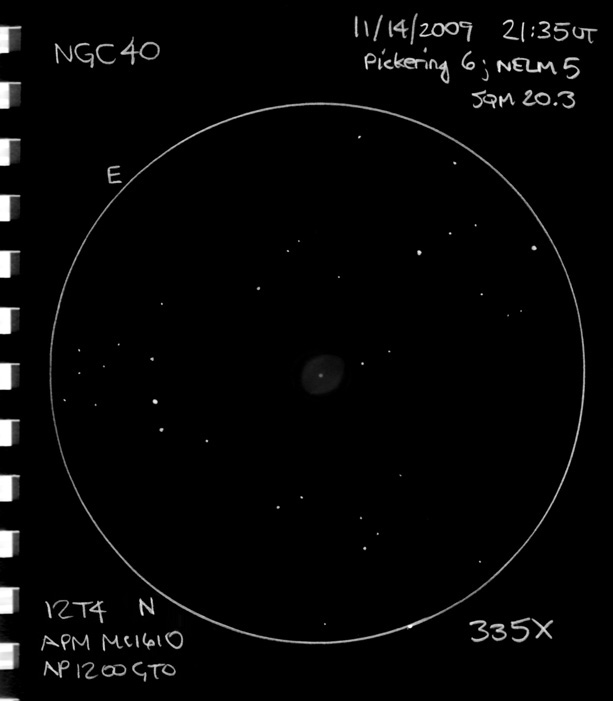
NGC 40, a planetary nebula in Cepheus
Sketch and Details by Jeff Young
450X is really getting into the swing of things, with knots along the western bright edge. 600X goes on to reveal the last knot (to the south end of the chain) to be a foreground star.

NGC 40, a planetary nebula in Cepheus
Sketch and Details by Jeff Young
Sketched from County Louth, Ireland, as viewed through a 16” Mak-Cass at 150X, 335X and 600X. Daler-Rowney HB Artist’s Graphic pencil on 150gsm cartridge paper. Scanned and inverted in Photoshop.
— Jeff.
